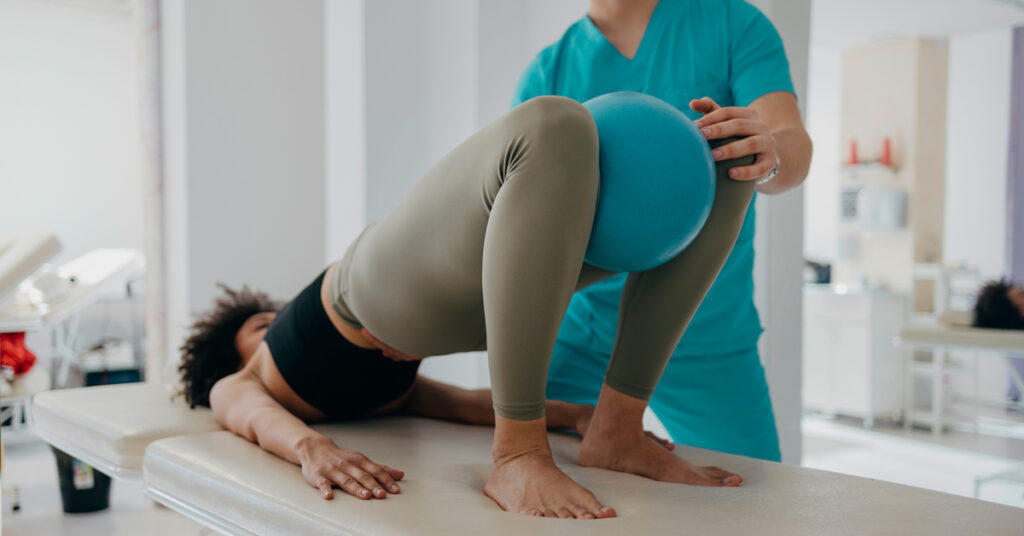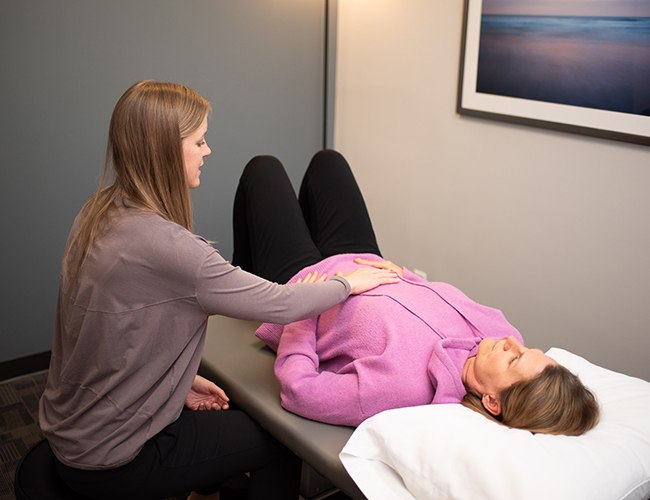Incontinence can be a difficult issue to deal with, both physically and emotionally. Many people feel embarrassed or ashamed of their condition, and don’t know where to turn for help. If you are struggling with incontinence, you may want to consider physical therapy. Physical therapy can help improve your symptoms and make life easier for you. In this blog post, we will discuss the benefits of physical therapy for incontinence and how it can help you get back to living your life.
Contents
What Is Incontinence?
Incontinence is the involuntary leakage of urine or stool. It can be a temporary problem caused by an underlying condition, such as a urinary tract infection (UTI), constipation, or pregnancy. In other cases, incontinence may be a chronic condition that requires long-term management.
There are two main types of incontinence:
Urinary incontinence: This occurs when you leak urine due to a loss of bladder control.
Fecal incontinence: This occurs when you leak stool due to a loss of bowel control.
This also may be called bowel leakage or anal incontinence.
The type of incontinence you have will determine the best course of treatment. In some cases, you may need a combination of treatments to manage your symptoms.
There are many possible causes of incontinence. Some common causes include:
Urinary tract infections (UTIs): These can irritate the bladder and cause urinary frequency, urgency, and incontinence.
Constipation: This can cause stool to leak from the rectum when you try to hold it in. straining during a bowel movement can also weaken the pelvic floor muscles, which can lead to fecal incontinence.
Pregnancy and childbirth: These can weaken the pelvic floor muscles and lead to incontinence.
Menopause: This can cause changes in vaginal tissue that can lead to incontinence.
Certain medications: These can act as diuretics, which can increase urinary frequency and lead to incontinence. Medications for Parkinson’s disease, Alzheimer’s disease, and some antidepressants may also cause incontinence.
Neurological conditions: Conditions like multiple sclerosis (MS), cerebral palsy, Parkinson’s disease, a stroke, or a spinal cord injury can damage the nerves that control the bladder or bowel. This can lead to incontinence.
Incontinence is a common problem, affecting millions of people of all ages.
How Can Physical Therapy For Incontinence Help?

Physical therapy can help treat incontinence by strengthening the muscles that support the bladder and rectum. This can help to prevent leaks and improve your overall control.
There are many benefits of using physical therapy to treat incontinence, including:
Improved Muscle Control
One of the most common causes of incontinence is weak pelvic floor muscles. These muscles support the bladder and rectum and help to control urine and stool leakage. Physical therapy can help to strengthen these muscles, which can improve your overall control.
Increased Bladder and Rectal Capacity
Physical therapy can also help to increase the capacity of the bladder and rectum. This can help to reduce the frequency of leakage episodes. It also can help to reduce the amount of urine or stool that is leaked when an episode does occur.
Improved Quality of Life
Incontinence can have a major impact on your quality of life. It can cause embarrassment, social isolation, and anxiety. Physical therapy can help to improve your quality of life by reducing incontinence episodes and improving your overall control.
Makes Your Treatment More Effective
The treatment for incontinence will be more effective if physical therapy is included in the plan. This is because physical therapy can help to strengthen the muscles that support the bladder and urethra. This can help to prevent or reduce leaks by making the muscles stronger.
Physical therapy for incontinence can also help to improve your quality of life. The therapist can teach you exercises that can help to make activities such as coughing and sneezing less likely to cause leaks. They can also provide advice on how to change your lifestyle to reduce the chances of leakage.
Types of Physical Therapy For Incontinence

Many types of physical therapy can be used to help with incontinence. Some of the most common types include:
Biofeedback
Biofeedback is a type of therapy that uses technology to help patients become more aware of their body’s functions. This can help learn how to control the muscles used for urination. This type of therapy is often used in combination with other treatments. Biofeedback may be done in a hospital or clinic setting, or it may be done at home with special equipment.
Pelvic Floor Muscle Exercises
Pelvic floor muscle exercises, also called Kegel exercises, are often recommended as a first-line treatment for incontinence. These exercises help to strengthen the muscles around the bladder and urethra, which can help to control urination. Kegel exercises can be done anywhere and can be done several times per day. Often, a physical therapist will teach patients how to do these exercises correctly.
Electrical Stimulation
Electrical stimulation is another type of therapy that can be used to treat incontinence. This type of therapy uses electrical currents to stimulate the muscles around the bladder and urethra. This can help to strengthen the muscles and improve urinary control. Electrical stimulation may be done in a hospital or clinic setting, or it may be done at home with special equipment.
Bladder Training
Bladder training is a type of therapy that can help patients learn to control their urge to urinate. This type of therapy often includes scheduled trips to the bathroom, gradually increasing the time between trips. Over time, this can help to increase the amount of urine that the bladder can hold before the need to urinate becomes too strong. Bladder training is often combined with other types of therapy, such as pelvic floor muscle exercises.
Real-Time Ultrasound
An emerging type of therapy for incontinence is Real-Time Ultrasound. This type of therapy uses ultrasound technology to help patients see and understand the muscles used for urination. This can help learn how to control these muscles. Real-Time Ultrasound may be done in a hospital or clinic setting, or it may be done at home with special equipment.
Sometimes, a combination of these therapies is used to treat incontinence. Often, the type of therapy that is used will depend on the underlying cause of the incontinence.
If you are suffering from incontinence, talk to your doctor about the best treatment options for you.
Why Do People Choose Physical Therapy For Incontinence?

People choose physical therapy for incontinence for a variety of reasons. The most common reason is to improve the quality of life. Other reasons include:
Regain Control Over Bladder or Bowel Function
One of the first things patients notice after starting physical therapy for incontinence is an improvement in control over their bladder or bowel function. For some, this may mean being able to hold it for longer periods before needing to go. For others, it may mean being able to reduce the number of times they need to go. Either way, regaining control can greatly improve the quality of life.
Reduce or Eliminate Leaks
For many people, one of the main goals of physical therapy for incontinence is to reduce or eliminate leaks. This can be accomplished by strengthening the muscles that control urine flow and improving bladder and bowel control.
Improve Sexual Function
SUI can often lead to sexual dysfunction due to the fear of leaks. This can be a major problem for both men and women. Physical therapy for incontinence can help by reducing anxiety and improving muscle control.
Reduce Stress
Stress incontinence is often caused by weak pelvic floor muscles. These muscles can be strengthened with physical therapy, which can in turn help reduce stress and improve bladder control.
Relieve Symptoms of Urinary Tract Infection
An overactive bladder can lead to urinary tract infections (UTIs). Physical therapy for incontinence can help by reducing the number of times you need to go and improving bladder control.
Affordable Way To Get Help
Physical therapy for incontinence is often much more affordable than surgery or medications. It is also a non-invasive option that comes with few side effects.
Customizable Treatment Plan
Every person is different and so is every case of incontinence. A physical therapist will work with you to develop a customized treatment plan that meets your specific needs. This ensures that you get the most effective treatment possible.
Conclusion
Physiotherapy can help to a great extent in treating incontinence. The pelvic floor muscles need to be toned and strengthened to control the urine flow. Kegel exercises, bladder training, and electrical stimulation are some of the effective treatments for incontinence. The physiotherapist will also guide you about the diet and lifestyle changes that need to be made to manage incontinence.
These were some of the things that you need to know about physiotherapy for incontinence. If you or someone you know is suffering from this problem, then do not hesitate to get in touch with a qualified physiotherapist. They will be able to help you overcome this problem and lead a normal life.
Physical Therapy help patients recover from pain. If you’re experiencing Back pain, Shoulder pain, Knee pain, Neck pain, Elbow pain, Hip pain, or Arthritis pain, a physical therapist at MantraCare can help: Book a physiotherapy session.


